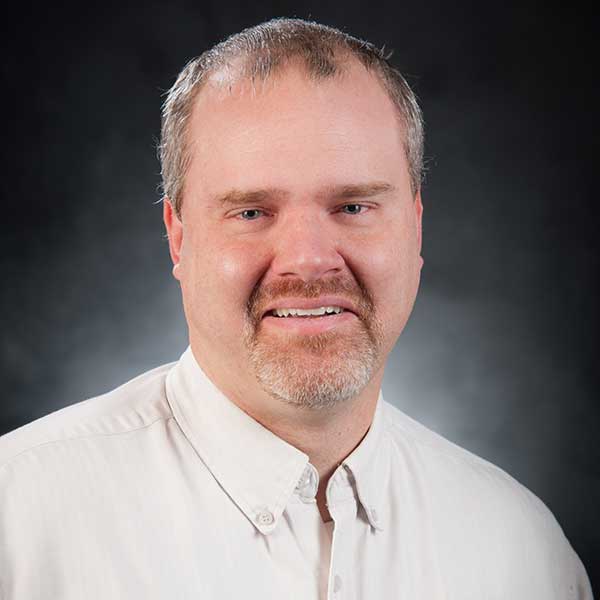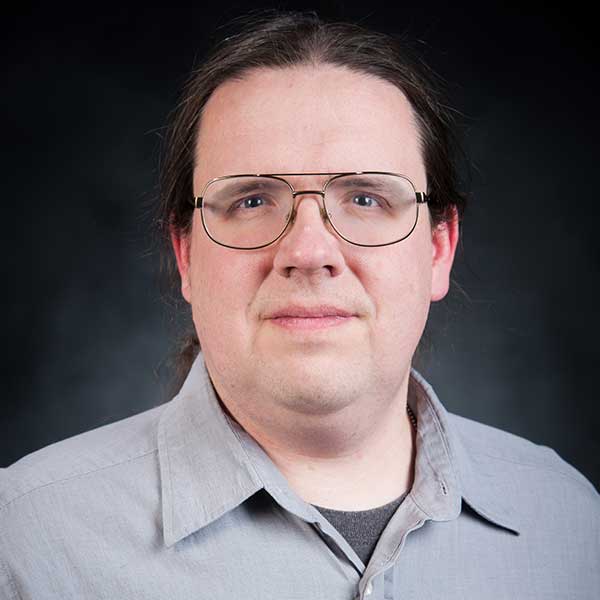What Cassini Can Teach Us
Vandals in Space | Cassini
U of I physicists have spent years studying Saturn. Their eye on the planet is about to crash into its atmosphere, but the discoveries will continue.
The Cassini spacecraft’s first day circling Saturn was Jason Barnes’ first day on the Cassini team.
It was June 30, 2004, and Cassini had become the first spacecraft ever to orbit our solar system’s ringed sixth planet. The same day, Barnes started work as a postdoctoral physics researcher at the University of Arizona, joining the hundreds of scientists around the globe studying the images and data Cassini sent back.
“That was really when the science started,” Barnes said. “I got married three days later, so it was kind of a whirlwind for me. Everything changed all at once.”
Not long after that and across the country, Matthew Hedman joined the Cassini team as a postdoctoral researcher at Cornell University in Ithaca, New York. He’d been studying the origins of the universe, but was invited to join Cassini because of his programming skills and experience sorting meaningful information from a massive amount of data.
“They said, ‘We want someone without preconceived notions about what we’re going to do,’” Hedman said.
More than 12 years later, Cassini has given humans an unprecedented view of a distant, dynamic planet and its equally fascinating moons, and sparked incredible discoveries. And all that time, Barnes and Hedman have been there making some of those discoveries.
From their initial beginnings on the Cassini team, Barnes and Hedman separately made their way to the University of Idaho, where they’ve built a pocket of planetary science expertise in the College of Science. Barnes, a professor of physics, came to U of I in 2008, and Hedman, an assistant professor of physics, arrived in 2013.
Cassini is slated to plummet to a crushing end in Saturn’s atmosphere on Sept. 15, 2017, but Barnes and Hedman’s work won’t be over.
“I think I’m going to spend the next 20 years finishing off the Cassini data set,” Barnes said. “There are really complex problems there, and there’s a lot to be done.”
What is Cassini?
The Cassini spacecraft has been in space as long as most UI undergraduate students have been alive. When it crashes into the planet this September, it will have spent nearly 20 years zipping through the solar system and gathering incredible information about Saturn and its moons.
The spacecraft blasted off from Cape Canaveral Air Force Station, Florida, on Oct. 15, 1997. The mission, a joint effort of NASA and the European Space Agency, contained two parts: the large Cassini orbiter and the smaller Huygens probe.
After a few trips around Venus to gain speed, Cassini sailed past Earth and Jupiter and, in 2002, snapped its first shots of Saturn.
Cassini entered Saturn’s orbit on June 30, 2004. Later that year, the Huygens probe detached and soared toward the moon Titan, where it landed on Jan. 14, 2005. In the 72 minutes it survived on Titan’s surface before going dark, it gathered data on the moon’s atmosphere and terrain.
The Cassini orbiter remained, and has since ventured around the planet more than 250 times, sending back information on the planet’s dynamic surface, rings and moons. Through Cassini, scientists have discovered seven new moons, a subterranean ocean on Enceladus, methane lakes on Titan, massive storms on Saturn’s surface and more.
On Nov. 30, 2016, Cassini began maneuvers known as the Grand Finale, gathering unmatched up-close views of Saturn. The spacecraft will continue to send data back to Earth up to its last minute.
Learn more about the mission at https://saturn.jpl.nasa.gov.
The Thrill of Discovery
In 1989, NASA began choosing its first teams of scientists for the Cassini mission. Barnes and Hedman weren’t yet on board.
“I was 12,” Barnes said with a laugh. “I was the same age Cassini is now in orbit.”
Those early scientists had hints of what to expect from the Voyager missions that had swept past Saturn, but couldn’t predict everything Cassini would find. Scientists of the next generation, like Hedman and Barnes, have been able to break into the project by working with Cassini’s unexpected observations and abilities.
“It was fun to see the process start and see people learn to interpret new data they hadn’t seen before,” Barnes said.
For example, when the Voyager probes passed Saturn’s moon Titan, they saw only a hazy orange ball. But Cassini has peered through the clouds and found a beautiful land-scape of methane lakes and seas concentrated at the moon’s north pole.
“We’d have been laughed out if we brought up Titan surface geology” before the spacecraft got to Saturn, Barnes said. “We really didn’t even realize what the instruments would be able to do.” Barnes and Hedman are participating scientists in the Cassini mission’s Visual and Infrared Mapping Spectrometer, or VIMS, team. The VIMS instrument captures images in 352 different colors, or wavelengths of light, revealing vastly more information than a human looking at Saturn would see.
With information from VIMS and other instruments on the satellite, Barnes and his students have concentrated on understanding Titan. Barnes’ team found evidence of waves and wind on Titan’s seas in 2014, and have studied the moon’s diverse features — including sand dunes, impact craters and salt-flat-like materials left by evaporated lakes.
UI is also an important part of bringing images of Titan to the public: Barnes wrote the software that turns multiple VIMS images into one clean picture, and his students operate it.
Shannon MacKenzie, a doctoral physics student who has worked with Barnes since 2012 studying Titan's version of salt deposits, has loved the collaborative, explorative nature of the Cassini project. It’s an exciting project as well, with students gathering for “data days,” when waves of new images from the spacecraft are sent to researchers around the world.
“The thrill of discovery, which is probably half the reason anyone becomes a scientist anyway, is available every couple of months,” MacKenzie said. “Seeing new areas is exciting, seeing areas we’ve seen before in better resolution is exciting, seeing changes in areas we’ve looked at before is exciting.”

Hedman and his students focus primarily on Saturn’s rings. In 2016, Hedman led a research team that “weighed” the central parts of Saturn’s bright B ring. He’s examined the origins of the faint E ring, which changes with Saturn’s seasons, and studied how patterns in the rings can reveal information about the moons and planet — for example, acting as a seismograph to detect Saturn-quakes.
Hedman also studies Enceladus, an ice-crusted moon of Saturn that blasts out jets of frozen water and other particles that help form the E ring. In 2013, Hedman and colleagues found that the jets vary depending on how close Enceladus is to Saturn.
These projects have not only allowed Hedman and Barnes to work with other Cassini researchers around the world, but also have given their students a chance to interact with the international planetary science community. A group of Barnes’ students attended a meeting of Titan surface scientists in Paris in November 2016, and UI researchers collaborate with colleagues in France, Italy, Germany and the United Kingdom.
“It’s a $4 billion spacecraft orbiting a planet,” Barnes said. “It’s kind of too big for one university or one group to do.”

U of I researchers explain how the Cassini mission offers insight to how solar systems and life might form in the universe.
Understanding the Saturn system can help us understand the formation of our solar system, Matthew Hedman says.
Why explore Saturn’s moon Titan? Jason Barnes explains how Titan might contain the “recipe for life.”
What No One Else Has Seen
When Hedman finds the time, he loves to sit at his computer and watch Saturn.
“We’re just staring at the rings for hours and hours,” he said. “That’s how it starts off, with a lot of what I do. Looking at those and going, ‘Wait, what’s that?’”
The VIMS instrument captures small thumbnail images of Saturn, and another instrument takes more traditional videos of the planet. Sorting through these images allows Barnes and Hedman to look for quirks that merit further investigation — though more often, their undergraduate and graduate students take these first steps.
“I have 19-year-olds in my lab who are the first ones to see the new results from Cassini,” Barnes said.
The discovery of waves on Titan started with Barnes spot-ting an unusual glint of light in an image.
“We saw that because we happened to be looking,” Barnes said. “And no one expected to see that.”
Recently, Hedman noticed the innermost ring suddenly had patterns that it didn't have before, indicating the ring had been disturbed.
“We don’t know why. It just appeared,” Hedman said.
“We’ve been staring at this thing for a better part of eight years, and all of a sudden there’s a change.”
When the researchers find anomalies worth pursuing, they dig into the data and start quantifying exactly what’s happening. Building a precise scientific understanding of Saturn and its moons and rings can help humanity comprehend how planets form, understand the early days of the solar system and the Earth, find potential sources of extraterrestrial life, and envision other worlds where humans could one day live.
These are the questions that will keep the Cassini mission alive long after the spacecraft itself is obliterated — and questions Barnes and Hedman, and the next generation of scientists they’ve trained at UI, will continue pursuing, whether through Cassini or through the next missions Earth sends to the outer solar system.
“Sometimes science is going where no one has gone before — and that’s awesome,” Barnes said. “But other times new science comes from looking where everyone has looked, but seeing what no one else has seen.”
Updated April 2023.
Article by Tara Roberts, University Communications and Marketing.








